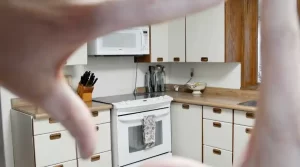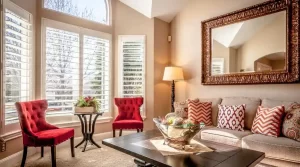One of the few more thrilling things you can do in life is to make your house truly YOUR HOME. This post is for anyone who has been wondering about remodeling their home and may even have a seemingly never-ending list of aims and desires. Before proceeding to the next phase of your home renovation journey, you’ll need to narrow down your wish list to a well-honed list of useful must-haves and action items.
Step 1: Budgeting
The first thing you’ll need to do is select a particular budget range to use for your home remodeling. As you can see, we made a budget range reference. Before you start this process, the budget you have in mind should be LESS THAN the entire amount you can afford to spend on your makeover. It’s a sad fact that you’ll encounter unexpected issues and difficulties once you begin tearing down walls for renovation. Thus, you want to reserve a portion of your entire budget for unforeseen expenses. Based on the lower end of your budget, you will work with your custom builder to determine the scope of your modifications. The process will be less stressful for you if you know you have a modest safety net to fall back on in case something happens or you decide you want to spend more money than you expected to on a final choice.
Step 2: Start with the Fundamentals
Sort the items on your entire wish list into three groups: necessities, like-to-haves, and repairs that need to be done.
The Repairs Required section will also list any maintenance jobs that you may have neglected over time. Whether you have an outdated roof, a leaky window, or any other concerns with your HVAC system, add them to your list of repairs that are required. There might be further fixes needed that you aren’t yet aware of. Your reputable builder and their experienced stable subcontractors should be able to help you determine what has to be done and if anything more needs to be done to bring your house up to code or make it a healthier environment for you and your family to live in.
The must-have items are those that served as the initial impetus for this remodeling journey. The bathrooms in your home may have received a lot of affection from your children, who may have also neglected to do much maintenance. The demands of your family may have changed over the past few years, so your kitchen or living room may no longer be enough. Depending on how big your family becomes, you might need to add more specialized or built-in storage. No matter what, make sure your Must-Have list is long enough to include everything you believe is necessary to make the experience of home restoration “worth it.”
The “Like-To-Have” section contains things that “definitely would be excellent” to have but might be the first to go if it transpires that your budget can’t support the scope of the renovation that you had anticipated it would. Depending on personal preferences, each person’s list may differ, but it’s common to include some of the more upmarket finishes that you might or might not opt to include. This list includes, for instance, upgrading all kitchen appliances as opposed to just the ones that need to be replaced, replacing manual window coverings with mechanized shades, switching from the current wooden windows to steel ones, completely rebuilding a fireplace mantle and surround as opposed to simply refinishing the old one, and upgrading all fireplaces.
Step 3: Focus on the Areas You Use the Most
This is vital if you want your money to actually matter. Take particular attention to the rooms in your house that you use frequently, including the living room, master bedroom, kitchen, breakfast nook, and any additional rooms. If your teenagers will be leaving the nest in a couple of years, think twice before giving them the “best of the best” room. We usually find that extra bedrooms, bathrooms, dining rooms, and bonus/game rooms fall lower on the priority list, especially once children have outgrown their earlier years. Even though most people think that enhancing their interior rooms has more immediate benefits, occasionally enhancing a property’s outside (beyond basic repairs) is ranked lower.
Step 4: Getting together with a custom builder before
Choosing a reliable custom builder by interviewing them is the finest plan of action after you’ve narrowed down your options. They will work with you to create a rough estimate based on current labor and material costs so that you may mutually reduce your list of options after discussing a wide variety of options. Your custom house builder will also put you in touch with an interior designer and an architect that they think would be a good fit for your needs, preferences, and budget. To ensure that your budget is comprehensive and accurate when you’re ready to begin building, your custom builder should continue updating their preliminary estimate as you move through the planning and pre-construction phases with each option and choice you make.
For more details on how to speak with prospective custom builders during an interview, see this blog article from before.
Establishing a reliable team of partners that prioritize your goals and interests is the most crucial thing to bear in mind as you narrow down your wish list and go on to the next phase of your home improvement. Work with a custom house builder, architect, and interior designer that are dependable, communicative, and of the highest degree. It might make all the difference.










